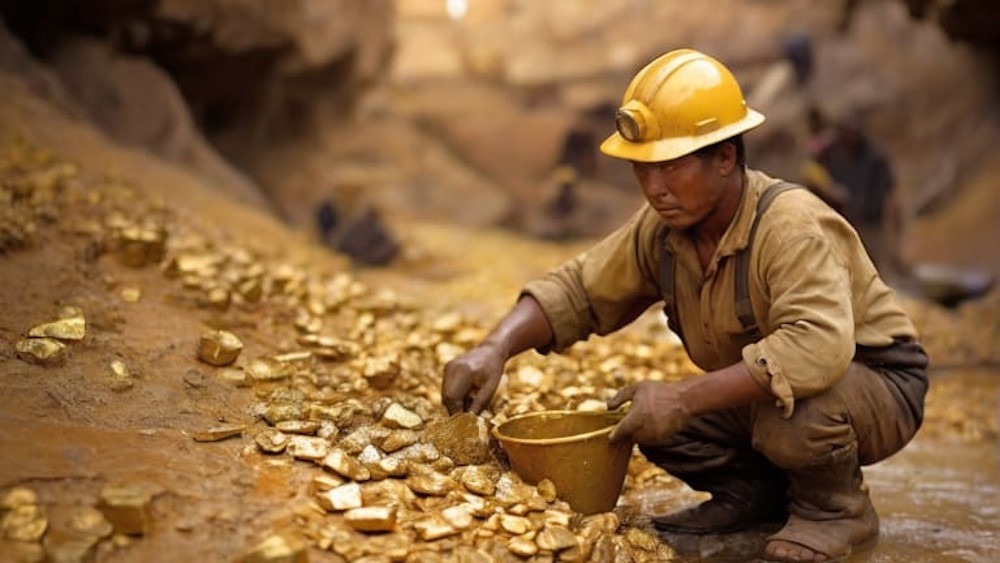Risk Averse Gold Miners Are Keeping Their Bets Closed

Massive investments and mergers are taking place as a result of the record-high price of gold. Companies aren’t rushing to lock in prices as a hedge against a potential market downturn because of this.
Producers of commodities such as copper and natural gas frequently engage in hedging, a strategy that helps to ensure a specific price for future production. However, the gold-mining business has shied away from it due to past trading missteps that occurred during bull runs in the precious metal. More than $5 billion was spent in 2009 by the Canadian behemoth Barrick Gold on hedges that were not profitable.
The big issue was whether the major miners would blink when spot gold prices reached an intraday record of approximately $2,195 per troy ounce on March 8 and hedging became more appealing than it has in a decade due to increasing interest rates.
In response, very few did. The chief executive officer of the world’s largest gold miner, Newmont, based in Denver, Tom Palmer, stated unequivocally that his company does not hedge gold. The 2007 buyout of Newmont’s hedge book cost $578 million. Palmer stated that we take full advantage of gold price spikes.
Preliminary estimates from the World Gold Council, an industry association, indicate that in 2023, when gold reached new highs, the combined hedge book of gold miners increased by approximately 10%.
Total hedges are still small compared to the bets the sector used to make, at around 192 metric tons. About three thousand tons of gold were reported as hedges by the mining sector at the turn of the millennium.
The world’s supply of gold is sensitive to any indications that miners are hedging their bets. In the past, gold prices were propelled by miners unwinding large hedges. The converse would most certainly be true if hedging were to be reinstated.
Lenders now need most new hedges to cover returns from new projects, and these agreements usually only last a year or two rather than ten.
Regis Resources is an Australian gold miner with a market cap of around $1 billion. Its CEO recently expressed relief at closing an expensive hedge book that had been agreed to years ago at a price of around half of today’s gold. “If I may paraphrase the great Freddie Mercury, we wanted to break free,” Jim Beyer informed analysts last month following his $65 million purchase of the hedges.
Hedging, according to many miners, reduces the exposure their shareholders get from investing in gold, which is why the precious metal’s price is so volatile.
According to Jake Klein, executive chair of Evolution Mining, an Australian gold miner, when it comes to investor demand for exposure to gold, the more unhedged it can be, the better.
The procedure is not avoided by all gold miners. About 20% of the production of the $10 billion Australian business Northern Star Resources is hedged. It took advantage of increased pricing by adding some opportunistic hedges recently. The Brazilian operations of AngloGold Ashanti, a company listed on the New York Stock Exchange, have a history of high costs, so the company has taken measures to mitigate this risk.
Additionally, Evolution has a few hedging strategies in place to ensure a profit from the expansion of their Western Australian gold activity. However, regardless of price drops, it has no plans to add more.
According to Klein, a low cost of manufacturing is the greatest defense against a drop in the price of gold.
Since early October, gold prices have climbed by around 20%, and they are currently trading near all-time highs. The decline in U.S. dollar strength and falling Treasury yields, according to analysts, help to explain the increase. Since gold is dollar-denominated and yields no interest, their values usually move counter to one another.
Demand for bullion and jewelry in China is another factor they mention, along with persistent geopolitical worries. Some people see gold as a safe haven from instability. Another key factor is the recent flurry of activity among central banks to purchase gold.
The miners are putting that windfall into expanding their operations and buying out their competitors. The energy transition relies on copper, an industrial metal, and many businesses have looked to invest in properties that produce it.
Many market watchers believe the Federal Reserve will start decreasing interest rates this year, which will increase demand for gold and keep prices high. High prices may discourage additional purchases by central banks and others, leading some to wonder if the surge can persist.
John Reade, chief market strategist at the World Gold Council, said that the next time gold prices look to be trending lower and CEOs worry about sustaining profitability, that’s when we’ll see if gold miners are hungry for hedging again.









